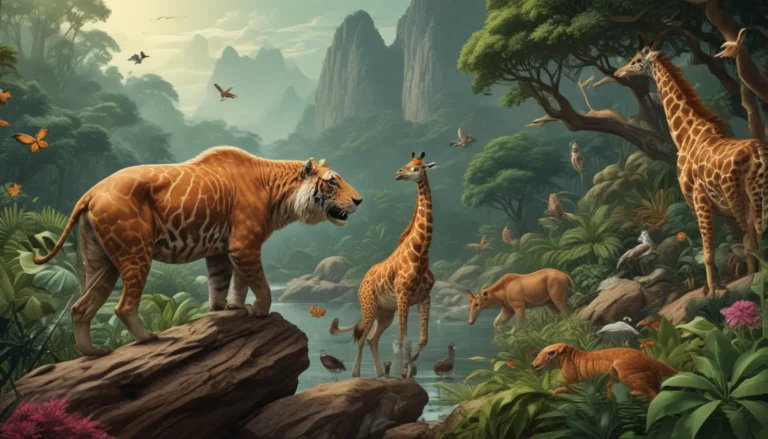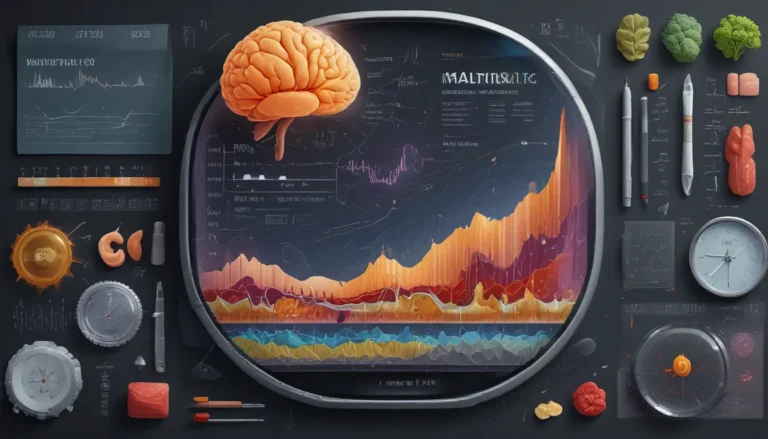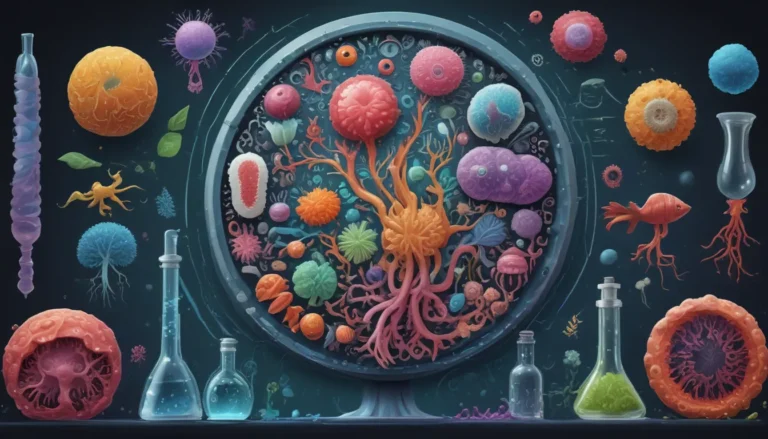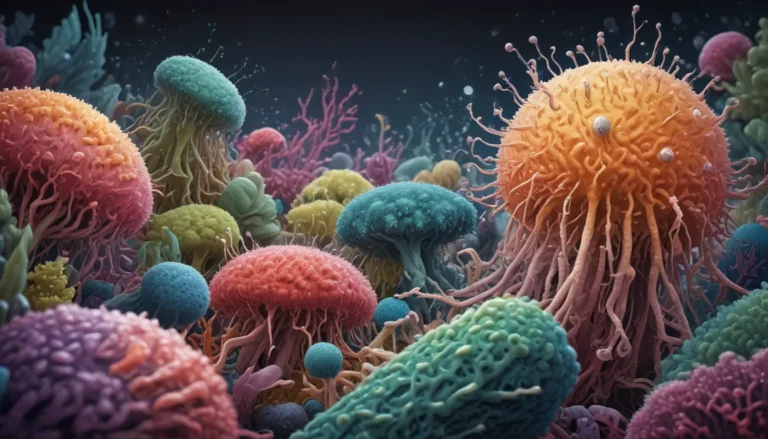A Note About Images: The images used in our articles are for illustration purposes only and may not exactly match the content. They are meant to engage readers, but the text should be relied upon for accurate information.
Ecology techniques are the backbone of understanding and conserving our natural world. These methods help us unravel the complex interactions between organisms and their environment, paving the way for effective environmental conservation strategies. In this enlightening article, we will embark on a journey to explore the captivating realm of ecology techniques. From drones and DNA barcoding to remote sensing and stable isotope analysis, we will uncover 16 fascinating facts that showcase the significance and impact of these techniques on our planet’s ecosystems.
Delving Deeper into Ecology Techniques
Ecology techniques serve as invaluable tools that enable scientists to study ecosystems, protect wildlife, and preserve the environment without causing harm. These methods not only advance our ecological knowledge but also aid in the development of sustainable practices for environmental conservation. By utilizing advanced technologies such as drones, DNA barcoding, and bioacoustics, researchers gain valuable insights into the intricate dynamics of our planet’s ecosystems. Let’s delve into the world of ecology techniques and unveil the secrets that lie within.
The Power of Drones in Ecology Research
Drones have revolutionized ecology research by allowing scientists to access and collect data from remote and challenging environments. These unmanned aerial vehicles provide researchers with a bird’s-eye view of ecosystems, offering valuable insights into areas that were previously inaccessible. With the help of drones, ecologists can monitor wildlife, track habitat changes, and conduct surveys with unprecedented precision and efficiency.
Decoding DNA Barcoding
DNA barcoding is a powerful technique used in ecology to identify and classify species based on their genetic information. By analyzing a short DNA sequence, scientists can distinguish between different species, even in cases where traditional methods may fall short. This technique is particularly useful for identifying organisms in early life stages or fragmented states, shedding light on the biodiversity of ecosystems with remarkable accuracy.
Harnessing the Power of Remote Sensing
Remote sensing is a cutting-edge technology that involves using satellites and other platforms to collect data about the Earth’s surface. In ecology, remote sensing plays a crucial role in monitoring changes in land cover, detecting deforestation, and analyzing habitat fragmentation. By harnessing the power of remote sensing, researchers can gain a comprehensive understanding of ecosystem dynamics and contribute to effective conservation and management strategies.
The Rise of Citizen Science in Ecology
Citizen science projects have gained popularity in recent years, allowing members of the public to actively participate in ecological research. Through smartphone apps and online platforms, individuals can report wildlife sightings, collect environmental data, and contribute to monitoring efforts. Citizen science not only empowers communities to engage with nature but also serves as a valuable resource for scientists seeking to gather large amounts of data across diverse geographical regions.
Unraveling Ecosystem Dynamics with Stable Isotope Analysis
Stable isotope analysis is a sophisticated technique that helps scientists trace the movement of energy and nutrients within ecosystems. By analyzing the ratios of stable isotopes in organisms, researchers can uncover valuable information about food sources, trophic relationships, and nutrient cycling. This technique provides a deeper understanding of ecosystem dynamics and plays a vital role in informing conservation and management decisions.
Embracing Ecological Modeling for a Sustainable Future
Ecological modeling involves creating computer simulations to predict and understand ecological processes. These models offer valuable insights into complex interactions within ecosystems, allowing scientists to make informed decisions regarding conservation strategies and ecosystem management. By utilizing ecological modeling, researchers can anticipate future changes in ecosystems and proactively address environmental challenges such as climate change and habitat loss.
Listening to Nature: The Power of Bioacoustics
Bioacoustics is a fascinating field that involves studying the sounds produced by living organisms. Ecologists use bioacoustics to monitor wildlife populations, identify species based on their vocalizations, and study communication patterns within ecosystems. By listening to the natural soundscape, researchers can gain a deeper understanding of ecosystem health, biodiversity, and behavior, paving the way for innovative conservation strategies.
Observing Wildlife Behavior with Camera Trapping
Camera trapping is a non-invasive method used to study wildlife behavior and population dynamics. By strategically placing motion-activated cameras in the field, researchers can gather valuable data on animal movements, interactions, and habitat use. Camera trapping allows ecologists to monitor wildlife populations without disturbing their natural behaviors, providing crucial insights into species conservation and ecosystem health.
Restoring Ecosystem Health through Ecological Restoration
Ecological restoration focuses on reviving degraded ecosystems to their natural or historical states. This technique plays a vital role in improving biodiversity, restoring ecosystem functions, and enhancing the overall health of the environment. By implementing ecological restoration projects, researchers and conservationists can mitigate the impacts of habitat degradation and promote the resilience of ecosystems in the face of environmental challenges.
Exploring the Hidden World of Environmental DNA (eDNA)
Environmental DNA (eDNA) is genetic material obtained from environmental samples such as water or soil. Scientists use eDNA analysis to detect the presence of specific species, even those that are elusive or difficult to observe directly. This technique provides valuable information about biodiversity, species distribution, and ecosystem health, offering a non-invasive and efficient way to monitor environmental changes and protect vulnerable species.
Navigating Ecosystems with GIS Mapping
Geographic Information System (GIS) mapping is a powerful tool used in ecology to analyze and visualize spatial data. By mapping out patterns and relationships within ecosystems, researchers can identify suitable habitats, monitor changes in land use, and develop conservation strategies. GIS mapping enables ecologists to make informed decisions about resource management, habitat protection, and biodiversity conservation.
Unveiling Microbial Diversity with Metagenomics
Metagenomics is a cutting-edge technique that allows scientists to study the genetic material of microbial communities within ecosystems. By analyzing environmental samples, researchers can uncover the diversity of microorganisms, their roles in nutrient cycling, and their impact on ecosystem functioning. Metagenomics offers a glimpse into the hidden world of microbial diversity, highlighting the intricate relationships between microorganisms and their environment.
Tracking Wildlife Movements with Telemetry
Telemetry is a powerful technique that involves tracking the movement and behavior of animals using radio or satellite technology. By attaching tracking devices to wildlife, researchers can gather valuable data on migration patterns, habitat use, and population dynamics. Telemetry plays a crucial role in wildlife conservation efforts, providing insights into the behavior and ecology of species and informing management strategies to protect vulnerable populations.
Uncovering Patterns with Bioinformatics
Bioinformatics is the application of computational methods to analyze biological data. In ecology, bioinformatics tools are used to process large datasets, study genetic diversity, and uncover patterns in species distribution. By harnessing the power of bioinformatics, researchers can gain valuable insights into ecosystem dynamics, species interactions, and biodiversity conservation, paving the way for evidence-based conservation strategies.
Illuminating Trophic Interactions with Stable Isotope Mixing Models
Stable isotope mixing models are valuable tools that allow researchers to determine the contributions of different food sources to an organism’s diet. By analyzing stable isotopes in tissues, scientists can trace trophic interactions, nutrient flow, and the impact of changes in resource availability on ecosystems. Stable isotope mixing models provide essential information about energy pathways, food webs, and ecosystem stability, enhancing our understanding of ecosystem dynamics and resilience.
Anticipating the Future with Ecological Forecasting
Ecological forecasting combines ecological knowledge and predictive modeling to anticipate future changes in ecosystems. This technique helps researchers address challenges such as climate change, species invasions, and habitat loss, enabling proactive conservation planning. By forecasting ecosystem dynamics and environmental changes, researchers can develop strategies to mitigate threats to biodiversity, safeguard ecosystem services, and promote sustainability for future generations.
Conclusion: Nurturing a Sustainable Future through Ecology Techniques
In conclusion, ecology techniques serve as powerful tools that enable us to understand, protect, and preserve the delicate balance of our environment. From studying ecosystem dynamics and tracking wildlife movements to implementing sustainable practices, scientists and researchers continue to make remarkable advancements in this field. By utilizing innovative technologies such as drones, bioacoustics, and stable isotope analysis, ecologists can gain valuable insights into the complex interactions between organisms and their environment.
Through the use of ecology techniques, we can unravel the interconnectedness of species, uncovering the intricate relationships and dependencies that shape our natural world. By monitoring and mitigating the impacts of human activities on ecosystems, we pave the way for a more sustainable future, where biodiversity thrives, ecosystems flourish, and the beauty of nature is preserved for generations to come.
FAQs: Exploring Common Questions about Ecology Techniques
-
What are some common ecology techniques used in research?
Ecologists employ a variety of techniques such as population surveys, habitat mapping, DNA sequencing, and remote sensing to gather data and analyze ecological systems. -
How are ecological techniques used in conservation efforts?
Ecology techniques are instrumental in assessing biodiversity, monitoring threatened species, identifying invasive species, and developing conservation strategies to protect and restore ecosystems. -
What role do technology and innovation play in ecology techniques?
Technological advancements like drones, satellite imagery, and advanced statistical modeling enhance the accuracy and efficiency of ecological research, enabling scientists to make informed decisions. -
How do ecological techniques contribute to our understanding of climate change?
Ecology techniques enable scientists to study changes in biodiversity, shifts in species distributions, and the impact of climate change on ecosystems, aiding in the development of mitigation strategies. -
Can ecological techniques help address environmental challenges?
Yes, ecology techniques provide valuable insights for addressing environmental issues such as habitat degradation, pollution, and species extinction, facilitating the development of sustainable solutions.
Unlocking the Wonders of Ecology Techniques
Ecology techniques offer a window into the hidden world of ecosystems, providing insights that inform conservation strategies, protect wildlife, and preserve natural habitats. By embracing innovative technologies and methodologies, researchers can unravel the complexities of our planet’s biodiversity, paving the way for a more sustainable future for all life on Earth. Dive deeper into the captivating realm of ecology techniques and embark on a journey of discovery as we unravel the intricate web of interactions that shape our natural world.






